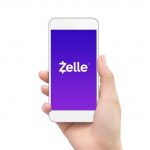Financial institutions wearied of seeing nonbanks scoop up more and more of the digital person-to-person payments business, so they’ve begun offering the service themselves. But a report released Wednesday indicates those efforts aren’t panning out all that well, at least for mid-sized and smaller institutions.
“Lots of hype and no results,” says the report from Malauzai Software Inc., an Austin, Texas-based developer of mobile-banking applications. According to the company’s figures, only 1.2% of active digital-banking users are making P2P payments, regardless of device. Approximately 12% of financial institutions offering a mobile app enable P2P payments in the app, according to Malauzai estimates.

The report labels P2P a “low-volume task” and a “huge disappointment” for financial institutions. “Zelle, real-time, etc., none of it changes these metrics,” the company’s report says. “The Venmo phenomenon continues to confound us bankers, as clearly it is growing, even if its average transfer value is sub $30. Different type of P2P, but way more successful.”
That picture could change soon, however. Zelle, a bank-controlled P2P network operated by Early Warning Services LLC, reported recently the system processed 100 million transactions in the first half of the year, for a total value of $33.6 billion. The network, which officially launched in June, said 50,000 consumers are enrolling daily. By contrast, PayPal Holding Inc., which owns Venmo, said the service processed more than $8 billion in PayPal’s second quarter, which ended June 30.
Much of Zelle’s volume is concentrated in the nation’s largest banks. Malauzai’s client base embraces more than 435 community banks and credit unions.
On the other hand, the company says remote deposit capture is a “hot” service for its clients. Its data, based on September results, indicate the average number of checks deposited per user jumped to 2.75, up from a “historic average” of 2.25. RDC allows mobile users to snap images of checks for a quick deposit, though Malauzai says customers have also been using tablets and even desktop computers.





